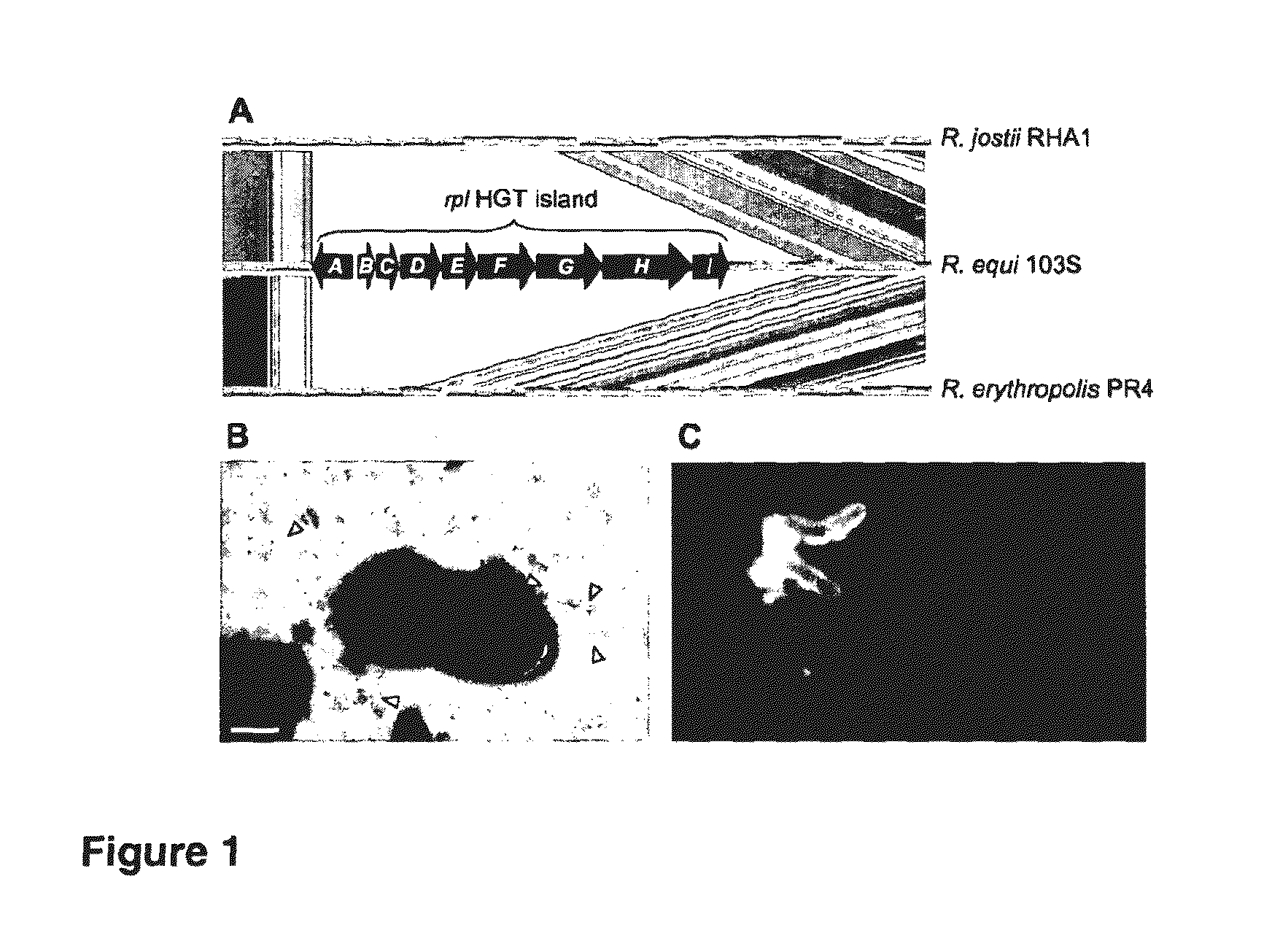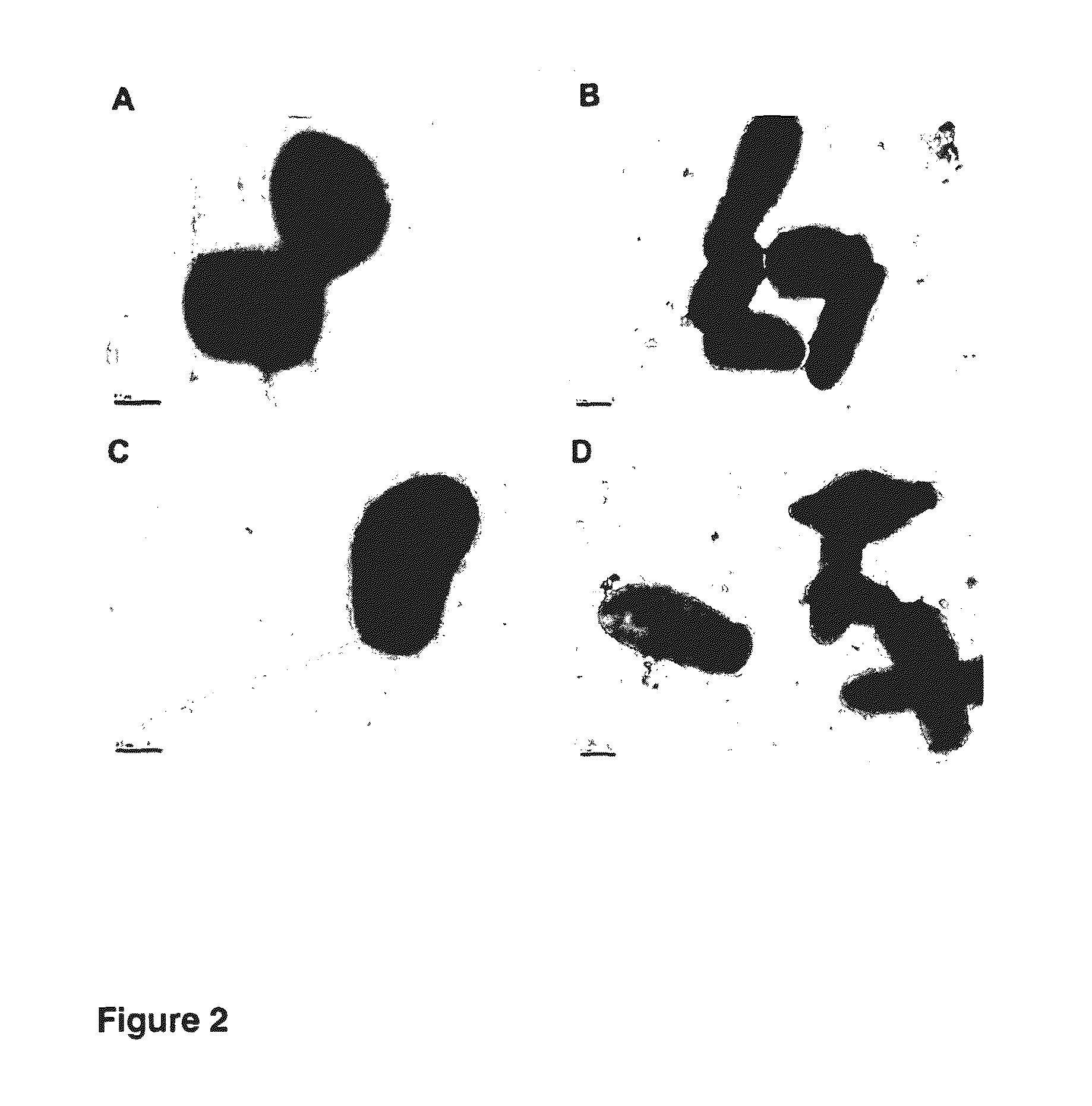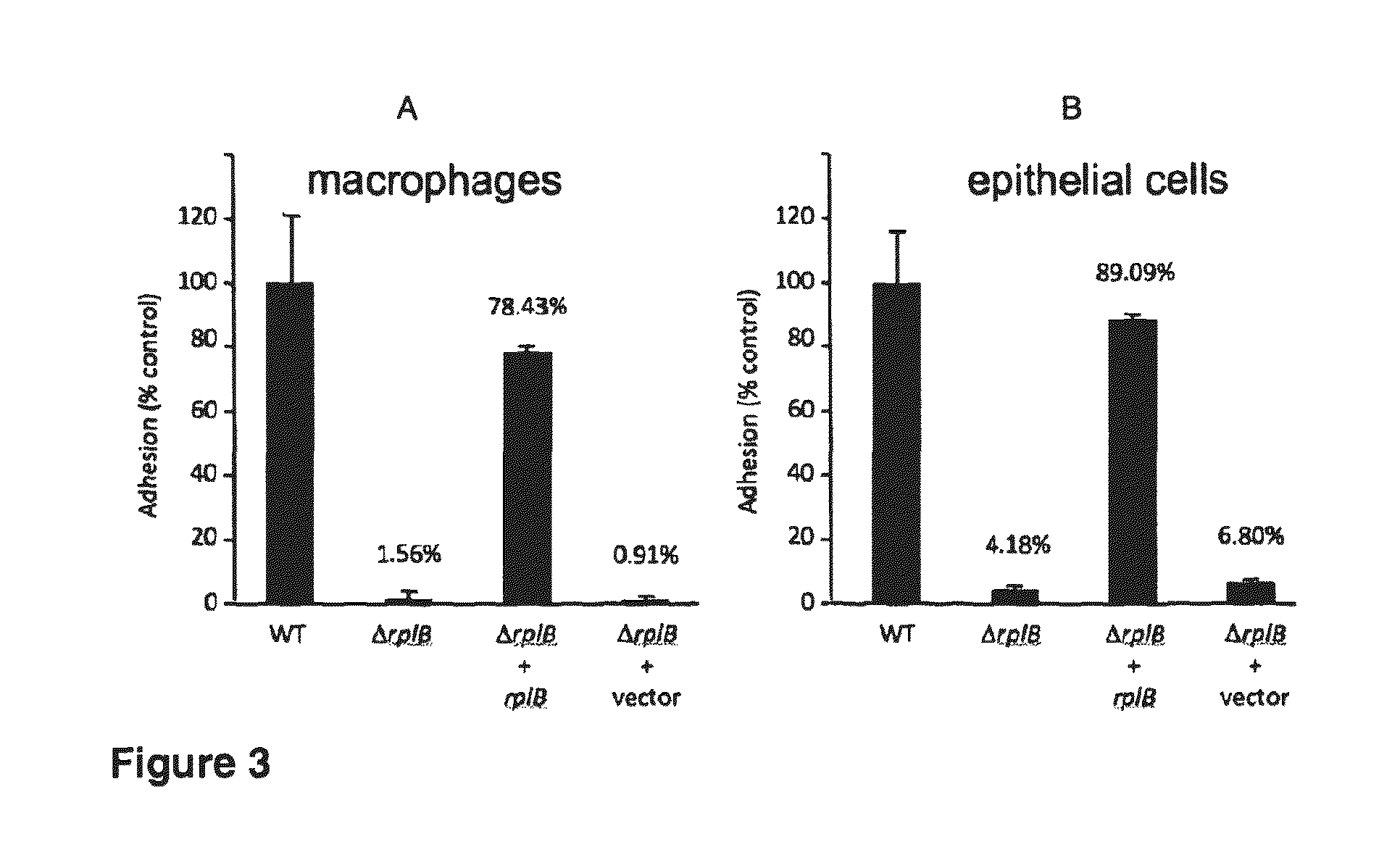Immune system modulating composition
a technology of immune system and composition, applied in the field of polypeptides, can solve the problems of lung tissue damage, necrotic death of marcophages,
- Summary
- Abstract
- Description
- Claims
- Application Information
AI Technical Summary
Benefits of technology
Problems solved by technology
Method used
Image
Examples
example 1
[0146]Using electron microscopy and other microscopical techniques we demonstrated that R. equi produces long, thick and apparently rigid pili appendages, typically between two and four per bacteria cell (FIG. 1 panels BC).
example 2
Genome Sequencing
[0147]Genome sequencing of the complete genome sequence of R. equi strain 103S was determined in an international collaborative venture. The genome has just over 5 million base pairs and encodes 4598 genes of average length value 1009 pairs of nucleotides.
example 3
[0148]Demonstration that the rpl (R. equi pili) locus (nucleotide positions 1,938,280 to 1,947,152, locus tags REQ18350-430) encodes the R. equi pilus by targeted mutant construction and genetic re-complementation analysis.
[0149]An in-frame deletion mutant was constructed in the rplB gene putatively encoding the Rpl pilin subunit (RplB). Homologous recombination methodology previously devised (Navas et al. 2001, Identification and mutagenesis by allelic exchange of choE, encoding a cholesterol oxidase from the intracellular pathogen Rhodococcus equi. J. Bacteriol. 183: 4796-4805), and a novel suicide vector, pSelAct, for positive selection of double recombinants on 5-fluorocytosine (5-FC) (van der Geize et al. 2008, A novel method to generate unmarked gene deletions in the intracellular pathogen Rhodococcus equi using 5-fluorocytosine conditional lethality. Nucleic Acids Res. 36: el 51) was used in this approach. The ΔrplB mutant was complemented by stably inserting the rplB gene pl...
PUM
| Property | Measurement | Unit |
|---|---|---|
| melting temperature | aaaaa | aaaaa |
| temperatures | aaaaa | aaaaa |
| temperature | aaaaa | aaaaa |
Abstract
Description
Claims
Application Information
 Login to View More
Login to View More - R&D
- Intellectual Property
- Life Sciences
- Materials
- Tech Scout
- Unparalleled Data Quality
- Higher Quality Content
- 60% Fewer Hallucinations
Browse by: Latest US Patents, China's latest patents, Technical Efficacy Thesaurus, Application Domain, Technology Topic, Popular Technical Reports.
© 2025 PatSnap. All rights reserved.Legal|Privacy policy|Modern Slavery Act Transparency Statement|Sitemap|About US| Contact US: help@patsnap.com



